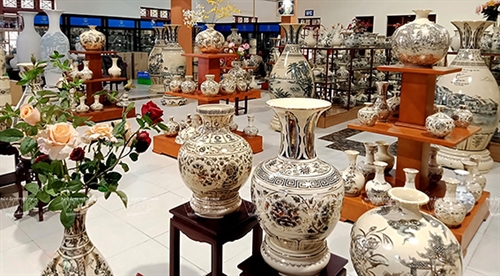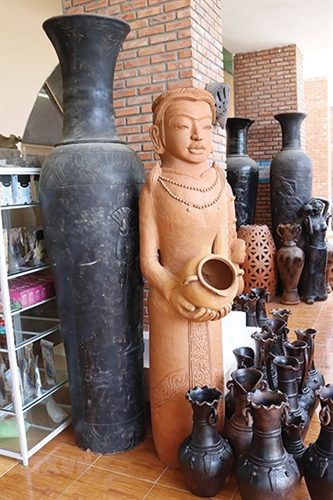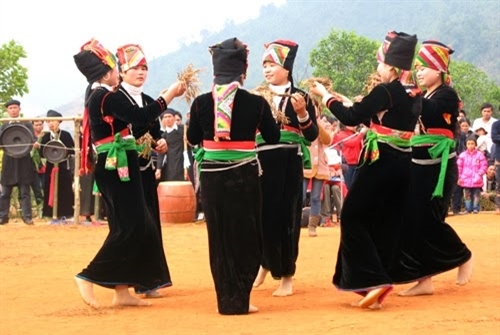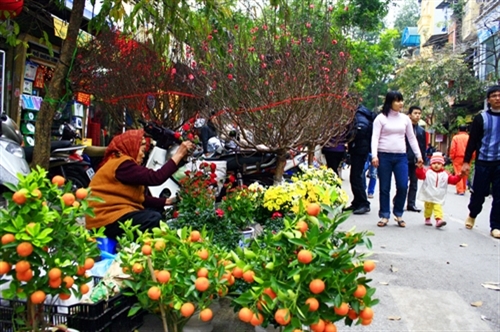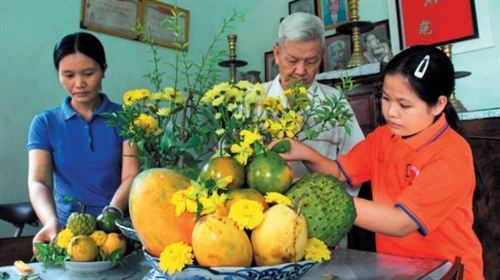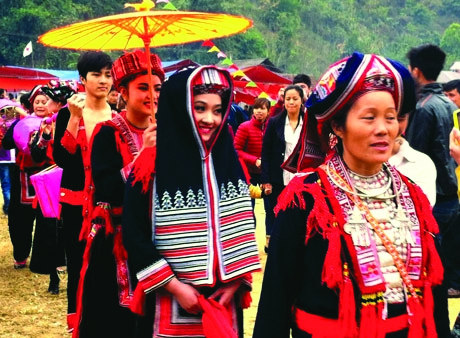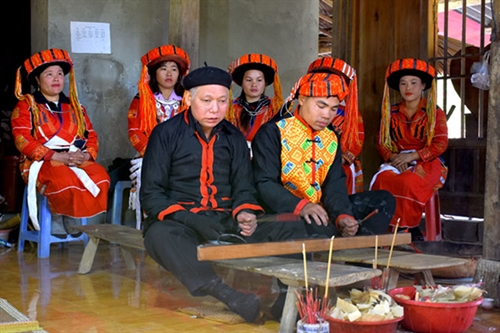Located on the bank of the peaceful Thu Bon river about 3 kilometers to the west of Hoi An ancient town, Thanh Ha pottery village in the same name ward is a well-known tourist destination in the central province of Quang Nam for its original durable bricks, yin-yang tiles and eye-catching terracotta everyday items.
On the 10th of the first lunar month every year, Thanh Ha villagers hold a ceremony to worship their pottery village ancestors at the Nam Dieu Temple. It is believed that the pottery craft in Thanh Ha village started in late 15th century when potters from the areas which nowadays are Thanh Hoa, Nam Dinh and Hai Duong provinces migrated to Thanh Chiem village. In early 16th century, they relocated to Nam Dieu village and finally to Thanh Ha village in Thanh Ha ward. The craft flourished in the 17th century when Thanh Ha pottery products such as cooking pots, kettles, jars, bowls, vases, weaving tools, red bricks, and yin-yang tiles were sold nationwide and even exported to Japan, China and Spain via the Hoi An trading port.
 |
Producing pottery products at Thanh Ha pottery village__Photo: https://www.hoiantown.vn/ |
| Producing pottery products at Thanh Ha pottery village__Photo: https://www.hoiantown.vn/ |
Like potters in many other pottery craft villages around the country, Thanh Ha villagers follow a four-step process, including clay preparation, shaping, decorating, and firing, of which clay preparation is considered the most important stage while shaping is the most difficult one. However, Thanh Ha pottery products are much lighter than those of other craft villages in the country.
While Bat Trang lusterware in the capital city of Hanoi is made of white clay, Tho Ha pottery products in Bac Giang province are made of green clay, and Phu Lang pottery and porcelain products in Bac Ninh province are made of red clay, Thanh Ha pottery products are made of yellow clay. In the past, Thanh Ha potters used locally available clay in paddy fields along river banks. As time passed, the local sources of clay run out and Thanh Ha potters have to buy clay from neighboring Dien Ban district.
The four-step process begins with earth treatment in which Thanh Ha potters spray water over raw clay and leave it for one day. The clay is then divided into small pieces and carefully wedged to remove impurities and reach its plasticity. To shape an item, a solid lump is put on a foot-driven wheel, squeezed and shaped by one person as the wheel is turned by another person. Nowadays, foot-driven wheels are replaced by motor-operated wheels. As soon as greenware goes off the wheel, it is left until it is no longer sticky and then taken out to leave in the sun to dry.
When greenware remains in the stage of soft leather-hard, Thanh Ha potters draw or impress simple decorative patterns on its body. For gourd-shaped objects, they are put upside down on the foot-driven wheel to be trimmed by a curved tool and exposed to sunlight for the second time until they are completely dry.
The completely dried greenware is now ready to be piled up for firing. The most common forms of kilns in the village are wood-fuelled rectangular brick kilns, which are usually 3 meters high, 5-6 meters wide and 4-5 meters long with two fire holes on the front side, three vents on the back side and three roof vents, used for firing terracotta products, and smaller kilns, which are 2-3 meters high, 2 meters wide and 3 meters long, for pottery items. Thanh Ha potters use willow wood or casuarina to feed their kilns. After a kiln is fully stacked, it is covered by clay, except two small holes for firewood to be put in.
To create different colors of pottery items, Thanh Ha potters do not use glaze. The only exception is yin-yang titles, which are usually glazed before being fired. Depending on the time of firing and the temperature of the kiln, the color can be changed from pink, brick red to light brown and ink-black. The village’s experienced firemen say that it usually takes 15 hours for the fire to reach the top of the pile in the kiln or the highest temperature - 1,000 degrees Celsius.
A wood kiln firing usually takes about two days and two nights from start to finish. Pottery items usually have brick red. However, those put near fire holes have gray. A fireman who wants to color his medicine cooking pots and pickled vegetable jars black and make them glossy has to fire his kiln for up to five or even seven days.
After the products are heated to maturity, the kiln is left for 12 hours before the finished pottery items are taken out.
Nowadays, to make ceremonial and decorative objects, clay is soaked in a jar full of water to create a thick fluid, known as slip. Slip may be mixed by a machine and then filtered through a sieve for two or three times to remove impurities and poured into molds which are left for 12 hours. After being dried, they are decorated with Chinese script or geometric patterns. Some items may be glazed with eggshells.
For yin-yang tiles which used to be used for the Nguyen dynasty’s royal palaces, Thanh Ha potters mix copper, lead, stone and kaoline with water to create glaze, known as a thin glass layer, to prevent tiles from water penetration and make them glossy. After dipped into the glaze and exposed to the sun for the second time, bisque tiles go for the second firing and are then taken out.
Through many ups and downs in the past five centuries, the making of pottery items is handed down from generation to generation in the village. With Thanh Ha potters’ creativity and love for this craft, the soulless clay is transformed into beautiful pottery items. Thanks to its traditional pottery making method, Thanh Ha pottery village has become a living museum and a valuable source of information for tourists who are passionate about exploring pottery production as well as for scientists to conduct researches.-

